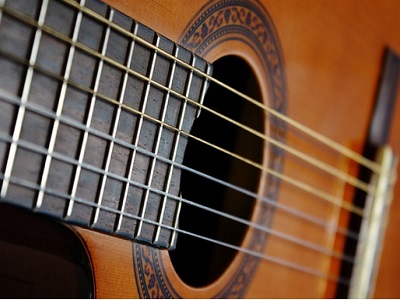3 Finger Picking Tips For The Classical Guitar
 If playing the guitar was a sporting event, learning the classical guitar would be a marathon. Classical guitar playing requires endurance, stamina, coordination, and finger strength, all in abundance.
If playing the guitar was a sporting event, learning the classical guitar would be a marathon. Classical guitar playing requires endurance, stamina, coordination, and finger strength, all in abundance.
You may think finger picking may not only seem hard, but it can also be hard if you don’t get expensive lessons.
Well, I’m here to tell you that you’re wrong. Finger picking can be easy if you learn a few basic finger picking techniques.
Build Strength And Muscles
First off, you need to strengthen your fingers for guitar playing. There are many ways to do this, but the safest and in my opinion most efficient way is to use a stress ball. Instead of smothering the ball with your fingers and palm, squeeze it gently between the tips of your fingers until they can almost touch its body.
Repeat as many times as you can. The motion should be slow and methodical as to avoid any potential injury. You will soon notice your finger becoming tired. This is due to them being a bit weak, but soon enough you will find them strengthening.
Beware of Spring Mechanisms For Finger Training
One thing I do not recommend is a spring loaded resistance gripper such as a Gripmaster, as these can cause carpal tunnel by putting too much strain on the delicate tendons of the wrist.
Once your fingers are nice and strong, you are halfway to finger picking glory. The next finger picking technique is yet another exercise to strengthen your fingers, this time involving your guitar. Fret the first string on your high E and, alternating from forefinger to middle finger to ring finger and back, pick the string with the meat of your fingertips.
You will notice that your fingers are very sensitive, and after a few minutes of picking may hurt. This is natural. It will take a bit of time to build up calluses on your fingers. Everyday, pick the same note, alternating between fingers until you are able to do so for an extended period of time.
Once you have your hand ready, it’s time for the final finger picking techniques.
Positioning Your Fingers Correctly
When you pick, your fingers should curl inwards almost like a claw. Don’t allow yourself to become lazy and rest your palm on the strings; this isn’t rock and roll.
Find a pattern that works for you. Whether it be designating each string to a certain finger when note spacings allow, or finding a certain finger rhythm that feels best (my pattern is forefinger, middle finger, forefinger, ring finger) if you are comfortable, your playing will shine.
Whether you realize it or not, listeners and audience members can pick up on how a musician feels just by the way they are playing. If you are forcing yourself into a fingering pattern that you don’t find comfortable, the audience will sense it and not feel comfortable as listeners. That being said, your pattern should utilize all three fingers excluding the pinky finger, and the thumb should always be for the bass strings.
Now that you have the means all that is left is to practice. Remember to pay attention to your form and correct any lapses into poor form. Good luck, and work hard!
Revolutionize The Way You Play And Learn Music
Guitar Pro 6 is a powerful tablature editor software for guitar, bass, and other fretted instruments. Equipped with a realistic audio engine, it makes writing music, guitar playing and learning songs a walk in the park. Click here to download Guitar Pro 6 instantly now…







Leave A Comment